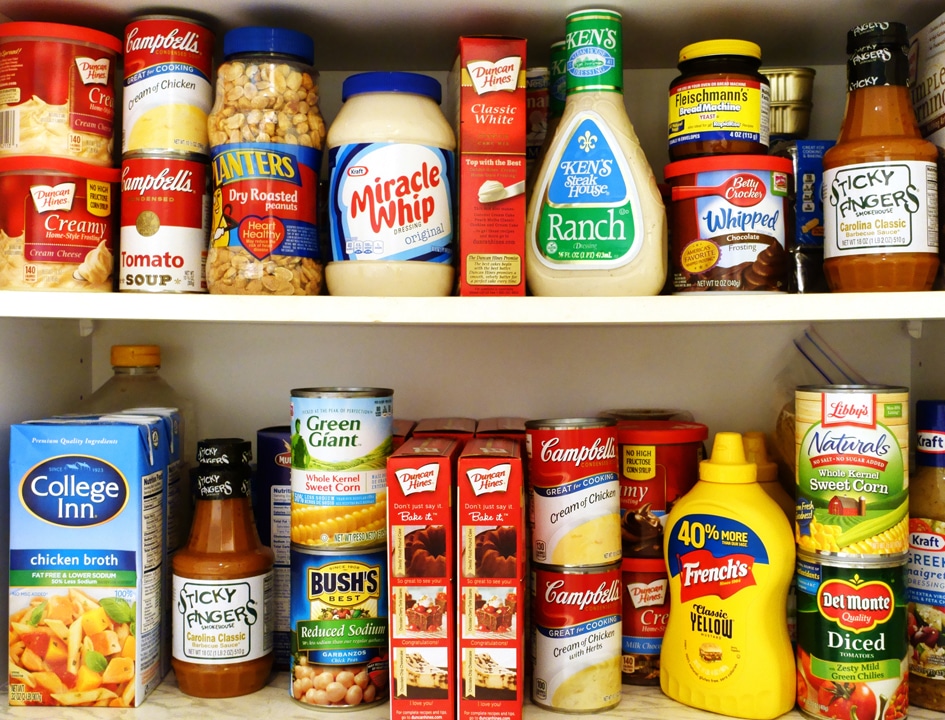written by:
reviewed by:

Eliminate processed foods. Welcome to the processed food elimination challenge! The goal is to cut your processed food by at least 25 percent. What do we mean by processed food? The definition can vary widely, but generally, it refers to foods that do not appear in nature. The opposite of processed food is whole food.
What We’re Eliminating
Any food in a package is likely “processed,” meaning that it was handled or treated extensively in order to be edible. Examples of processed foods are cereals, breads, juices, many meats, cheese, potato chips, crackers, and more. Not all processed foods are bad for you — technically, sliced apples are “processed” — but many heavily processed foods have added sugar, salt, preservatives, artificial colors and flavors, and partially-hydrogenated oil (aka trans fat), which can be bad news for your health.
There is a spectrum of processed food, from minimal processing (like cutting and chopping) to heavy processing (like white bread and potato chips).
For our elimination challenge this week, we want to focus on cutting out at least 25 percent of heavily processed foods.
Heavily processed foods to cut during this challenge (and maybe forever):
- Ready-to-eat foods like crackers, white bread, white rice, deli meat, processed cheese, potato chips, and more.
Minimally processed foods you can keep:
- Foods pre-prepped for convenience like bagged spinach and lettuce, cut vegetables, and fruit.
- Foods that are frozen at their peak like fruit and vegetables in the freezer aisle.
Mid-range processed foods that may be OK to keep, too:
These are foods that are mixtures of whole foods — pasta sauce, cheese, yogurt, and salad dressing.
The key is to read the label. As long as the list of ingredients is short (generally, less than five ingredients) and there is little to no added artificial ingredients, then you can keep it during the elimination challenge. Here’s a list of artificial ingredients that make a food “too processed” to keep:
- Added sugar
- Added salt
- Artificial colors
- Artificial flavors
- Artificial sweeteners
- Preservatives (e.g., nitrates and nitrites)
- Partially hydrogenated oil
Assess What You Eat
The first step in changing your diet through this elimination challenge is to assess your intake. Keep a food diary for a couple of days, or at least think back to your typical meals. If you eat a “typical American diet,” it might look like this:
- Breakfast: Bagel with cream cheese, coffee with cream and sugar.
- Snack: Granola bar.
- Lunch: Ham sandwich with American cheese on white bread, potato chips, Diet Coke.
- Snack: A package of honey-roasted peanuts.
- Dinner: In a rush, picked up Chinese take-out on the way home.
The above food is nearly 100 percent processed. To cut out 25 percent, you will need to fully change one meal or both snacks or a portion of each meal.
Simply Replace Processed Food With the Good Stuff
Eat more fresh fruits and vegetables. For your snacks, eat whole organic fruit like a banana, an apple, or an orange. Replace lunch “sides” like chips with a fruit or vegetables, e.g. apple slices or carrots and celery or a small side salad.
Eat nuts and seeds. Instead of processed food like a packaged granola bar, eat raw or roasted organic nuts and seeds. Good choices include almonds, walnuts, cashews, pistachios, pumpkin seeds, and sunflower seeds. Beware of too much-added salt or other artificial ingredients.
Eat “real” meat and dairy. Instead of highly-processed deli meats with added sodium and preservatives, eat fresh (and organic and local, if possible) meat. Examples include fresh ground beef, slices of roasted turkey or pork, and baked chicken parts like thigh or breast. Do the same for dairy: instead of processed American cheese or cream cheese, choose real cheeses like cheddar and swiss.
Eat with utensils. All of our processed food is designed for convenience, but we often sacrifice good nutrition for convenience. When you eat with utensils, you will eliminate processed grain products almost entirely. So, instead of a sandwich, eat a large salad or a “meat (or vegetarian protein) and vegetable” plate.
Drink “real” drinks. One of the easiest ways to eliminate processed food is to stick to the basics for your beverages. Drink only water, unsweetened coffee and tea, and simple fruit juices. By simple fruit juice, we mean fruit juices made from fruit and water only.
Always choose whole foods when possible. Whenever faced with a food choice, always choose the least processed food. For example, if you are on the go and just need a quick sandwich, choose whole grain bread instead of white. Instead of grabbing a breakfast bar as you run out the door, ensure you have a small stock of freshly boiled and peeled eggs in the fridge and take two of those instead.
Eliminating processed food may seem challenging at first, but once you make the appropriate substitutions, you’ll see that it’s not only easy, but you enjoy your food more.
Good luck!
©iStockphoto
The information provided on Health Food Radar is intended for general informational purposes only. While we strive to offer accurate and up-to-date content, we do not provide medical advice, diagnosis, or treatment. Always consult with a qualified healthcare professional before making any dietary or lifestyle changes, especially if you have underlying health conditions or concerns.



